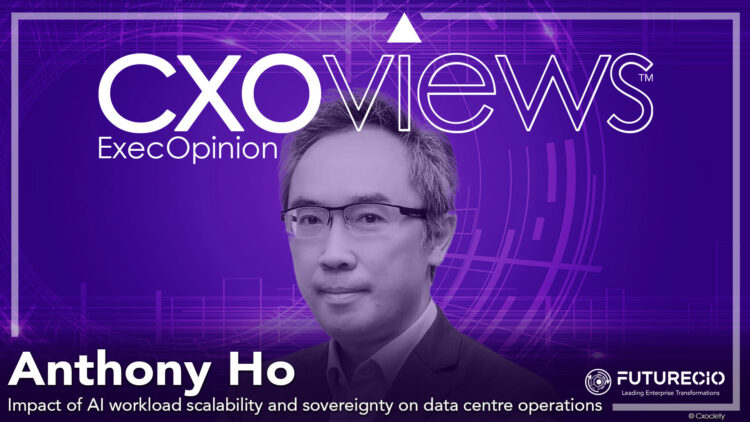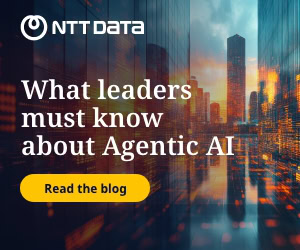AI is booming, and as models grow larger and more powerful, data centres are being pushed to their limits. Customers increasingly seek operators that can provide the raw compute power AI needs, as well as the ability to navigate complex sovereignty laws with robust security to match.
For operators like Equinix, this rising pressure of scalability and sovereignty is redefining how facilities are built, connected, and secured.
AI workload scalability

Unlike traditional enterprise workloads, AI doesn't follow predictable patterns. IBM explains: "AI workloads are differentiated from most other types of workloads by their high levels of complexity and the types of data processed. Compared to other types of workloads, AI workloads typically process unstructured data, such as images and text. Broadly, AI workloads can be divided into two main categories, with model training and model inference being the two most encompassing."
According to IBM, model training workloads are used to teach AI frameworks to identify patterns, enabling them to make accurate predictions. On the other hand, model inference workloads comprise tasks (and their associated computing power) necessary for AI models to interpret and respond to new data and requests.
Training large models requires massive computing power, advanced cooling, and dense hardware deployments, while inference workloads require distributed setups that maintain high performance.
Anthony Ho, director of Product Management, Asia-Pacific at Equinix, says this divergence means the old "one-size-fits-all" data centre model no longer works. AI is driving a strategy that builds ultra-high capacity for training while maintaining flexible, distributed labs for inference.
Equinix's strategy reflects this divide. Its xScale facilities, located in Tokyo, Osaka and Sydney, handle hyperscaler training workloads with high-density power and advanced cooling, while its retail centres focus on inference for enterprises. The split strategy enables operators to meet both the demands of AI without overbuilding.
But building bigger facilities isn't the only challenge. Even the most advanced AI workload can be derailed by something less technical but equally critical: regulation.
The sovereignty dilemma
Scalability is only half the battle. Operators also need to navigate increasingly complex data sovereignty laws, especially in the Asia Pacific region, where regulations remain fragmented. Ho notes that the area is still in its early stages when it comes to AI-specific sovereignty, but existing data protection acts already dictate how workloads must be managed.
Every APAC economy has its own privacy/data laws with different rules on consent, cross-border transfer, and breach reporting. For example, India permits cross-border data transfers unless explicitly restricted by the government. In contrast, China requires approval from the Cyberspace Administration of China, certification, or adherence to standard contracts for cross-border transfers. Enforcements and penalties also differ per country, such as a percentage of annual income and prison terms in the Philippines, and a possible criminal liability in Thailand and Malaysia.
With this patchwork, operators are pushed to design localised infrastructure and continuously adapt to shifting laws. Fragmented laws on sovereignty may also result in running separate models or data silos per country, leading to high costs and delayed scaling.
Security and quantum readiness
Where regulation dictates where data can reside, security determines how safely it can be moved. Comparing AI-type workloads and traditional data centre service security, Ho said that physical security hasn't changed much. However, AI introduces new security demands for networking that require stronger encryption.
"You really need to transmit data out of and into your data centre, or even out of the country, depending on what data somebody requires. And then within our infrastructure, there's an application layer with something that we will not touch, how customers encrypt the data," he said.
When asked about quantum encryption, Ho says, "It's still early," but he revealed that they already have quantum computing customers in Korea and have been preparing for quantum readiness.
AI infrastructure
"Most enterprise customers know AI," says Ho, "but they don't focus on infrastructure."
He notes that enterprises are also approaching AI infrastructure investments differently. Initially, most organisations leaned heavily on cloud-first AI, consuming GenAI models via hyperscalers. Here, customers pay for access, focus on connectivity and cost of moving data. Now, data sovereignty and cost control are driving a strategic shift towards building in-house AI infrastructure, which requires upfront hardware investments, as well as power and cooling design considerations.
According to Ho, whether running on cloud-connected infrastructure or investing in their own AI infrastructure, customers increasingly demand a clear total cost of ownership (TCO) for AI deployments.
To ensure performance, Equinix uses metrics beyond traditional uptime guarantees. Environmental monitoring (power and cooling), latency across distributed centres, and five-nines availability (99.999%) all play a role in supporting customers' AI workloads. Five-nines availability means that the data centre is operational and accessible 99.999% of the time, which is crucial for maintaining the continuous operation of AI workloads.
For enterprises shopping for an AI-ready data centre, Ho advises asking the right questions:
- Security: "How secure is your data centre?"
- Power & cooling: "What workloads can you support, what cooling options are available?"
- Ecosystem: "Do you have strong cloud and network provider connectivity?"
- Coverage: "Can you support multiple locations and interconnect them?"
Looking forward
“To support AI, you must bring together space, power, cooling, connectivity, and ecosystem. Only then can you deliver scalable, secure AI deployments.” Anthony Ho
What is common among scalability, sovereignty, and security is clear: AI-ready data centres of the future must be bigger, more connected, and more intelligent than ever before
As Ho puts it: "To support AI, you must bring together space, power, cooling, connectivity, and ecosystem. Only then can you deliver scalable, secure AI deployments."
Data centres play a significant role in the AI revolution. They are not just facilities, but enablers of a transformative industry. The future will demand data centres that are not only bigger and more powerful but also more connected, compliant, and intelligent, enabling enterprises to harness AI securely and at scale.





